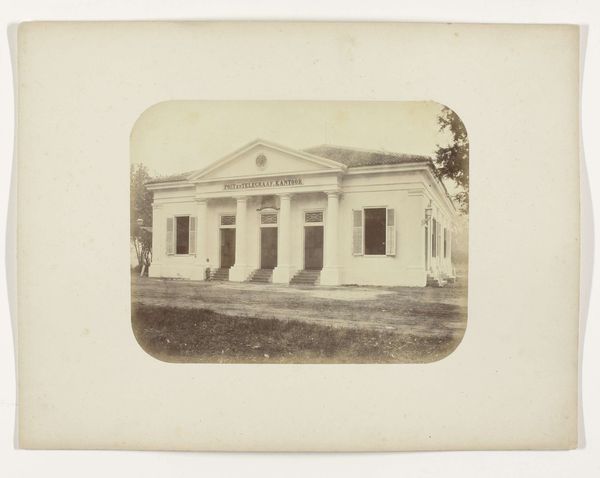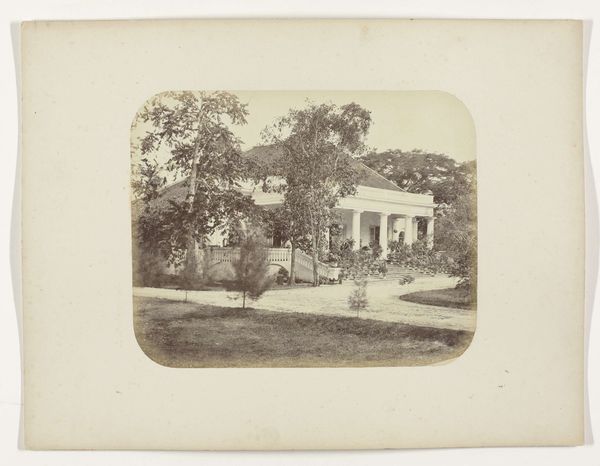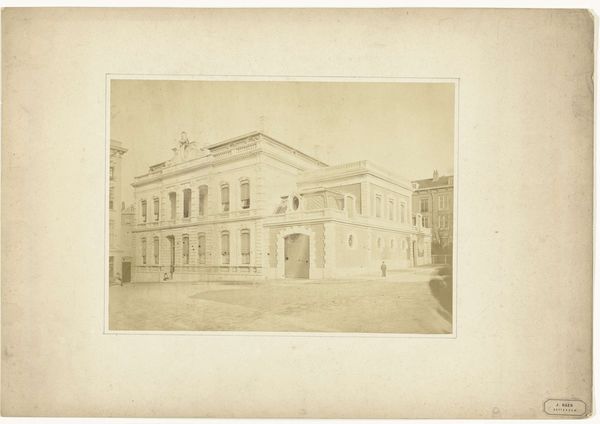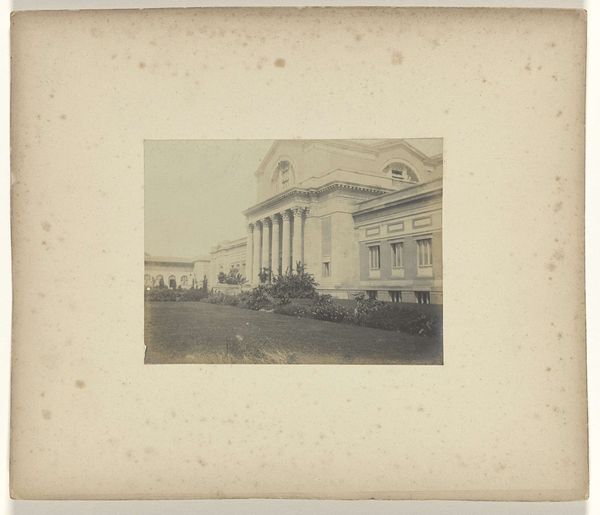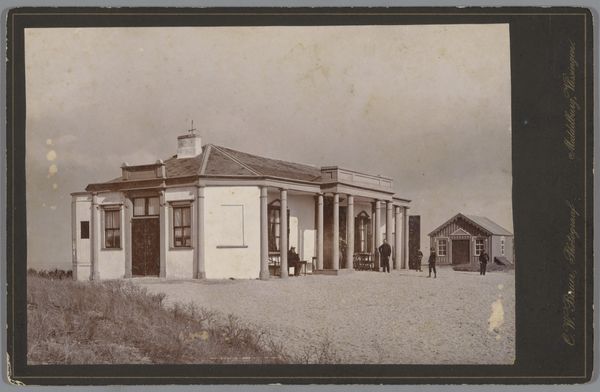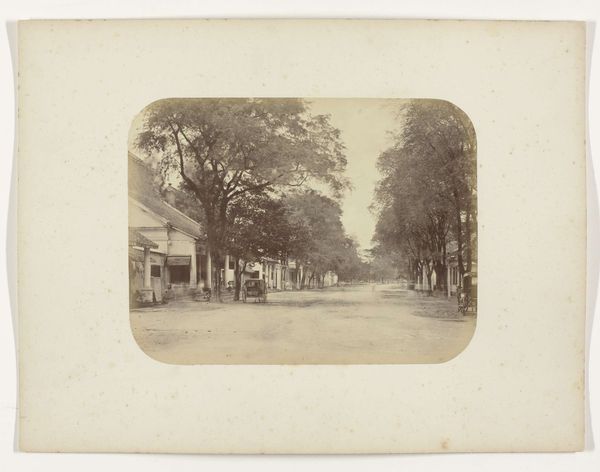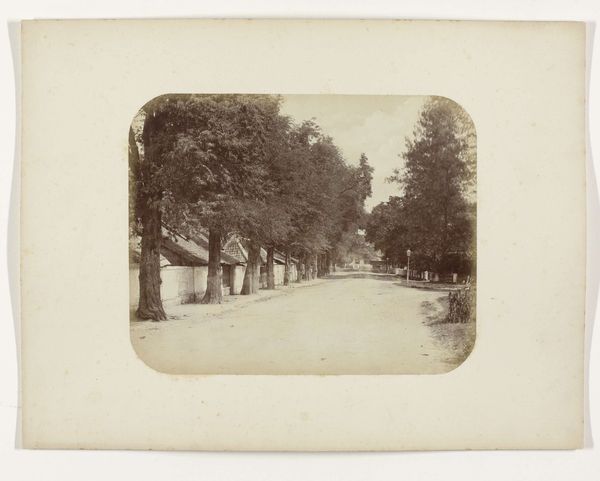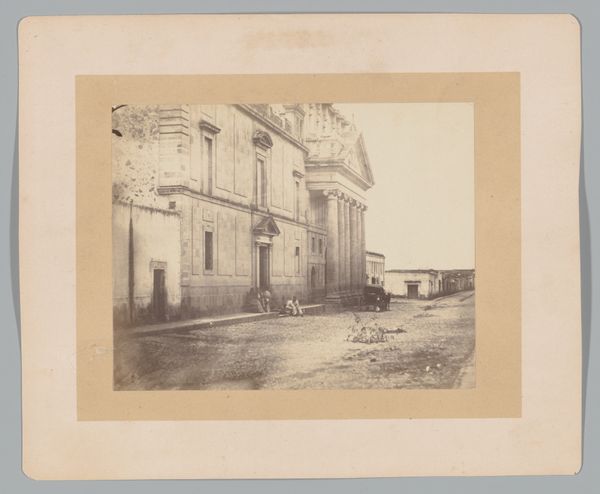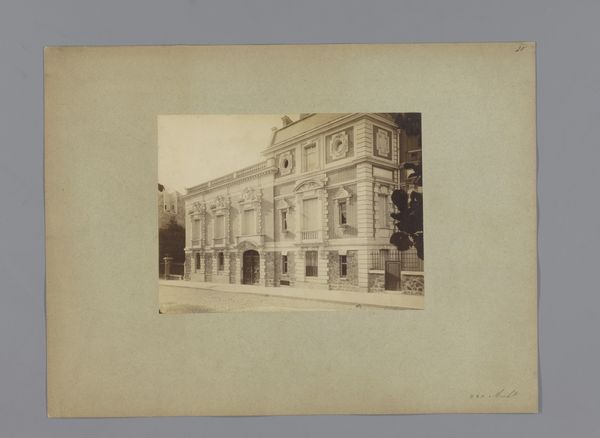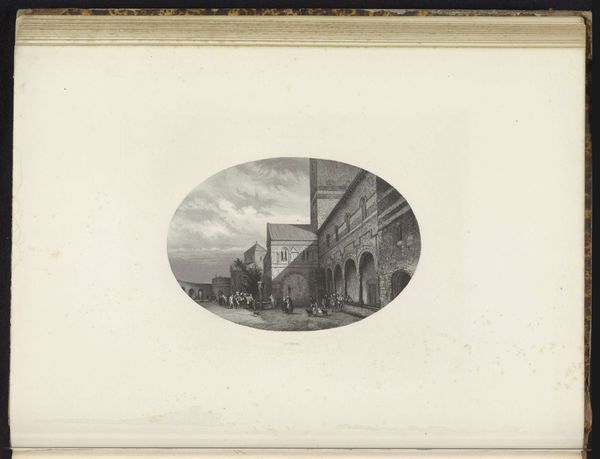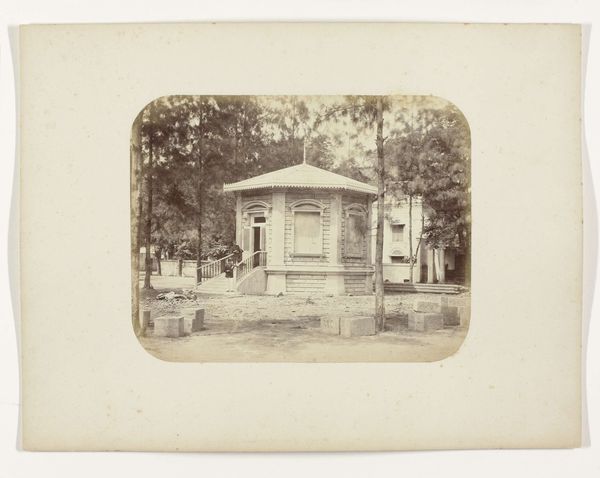
photography, gelatin-silver-print
#
photography
#
orientalism
#
gelatin-silver-print
#
cityscape
#
realism
Dimensions: height 19.7 cm, width 27.7 cm
Copyright: Rijks Museum: Open Domain
Editor: This is Herman Salzwedel’s “De sociëteit van Surabaya,” taken sometime between 1876 and 1884, using gelatin-silver print photography. The architecture is imposing, but there's an almost unsettling emptiness about the scene. What can you tell me about the materials and the time it was made? Curator: Well, let's consider the gelatin-silver print itself. By this period, photography had moved beyond daguerreotypes, but what implications arise from using this process in a colonial context? How did photographic technologies become tools of documentation, control, even exploitation within colonial power structures? Editor: So the material itself has embedded politics. I guess I was just seeing a building. Curator: The photograph presents a building but remember it is produced in a context. Think about the silver mined for the photographic process, the labor involved in producing and distributing the final print. How does it function in constructing and reinforcing the colonial gaze, influencing perceptions of Surabaya? The society pictured here signifies control over the raw materials and labor, and impacts consumption and perception of space. Editor: I never really thought about that when looking at this sort of photograph. The whole technology, from the materials upward, represents a colonial influence. Curator: Exactly! We have to recognize photography here not simply as art, but as a produced artifact inextricably linked to networks of labor, materials, and power dynamics of the time. It prompts us to question what the image actively obscures and reveals about colonial realities. Editor: This makes me want to investigate more about the labor that produced the photograph itself, not just what it depicts. Thanks! Curator: Indeed. And by analyzing the means of its production and reception, we gain insights into the complex relationship between art, materials, and colonial social hierarchies.
Comments
No comments
Be the first to comment and join the conversation on the ultimate creative platform.
